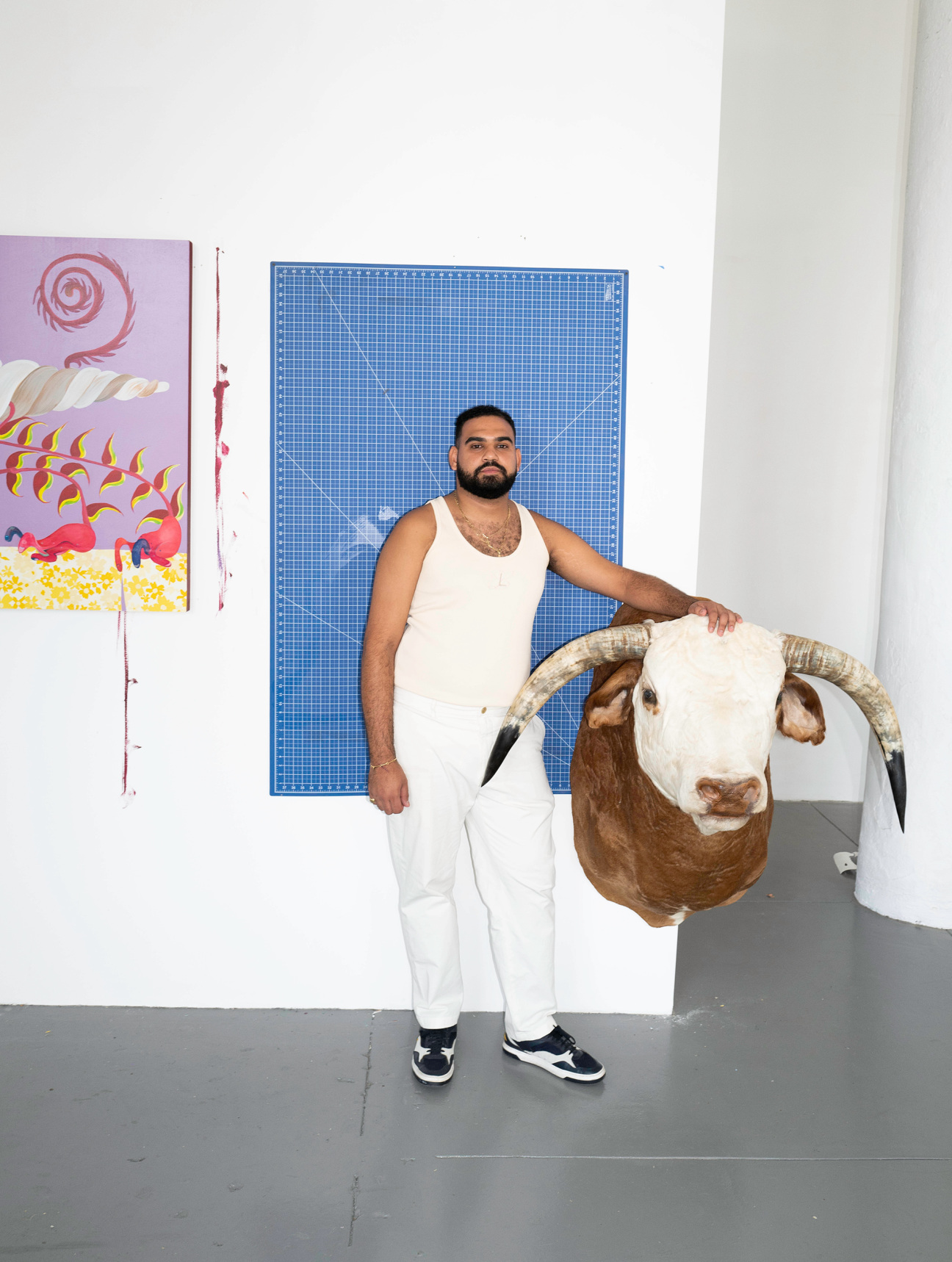
“There’s a lot of symbolism in my work that is specifically very Caribbean and unless you’re from that part of the world, sometimes you’re not going to get it,” Bony Ramirez, 26, tells me from his studio in New Jersey. He hasn’t returned to his hometown of Tenares, Salcedo, in the Dominican Republic since relocating to the U.S. in 2009, but his memories inform the contours of his surreal paintings, which are typically comprised of mixed media: Mod Podged layers and cutouts, the blades and hilts of machetes. After graduating from high school, Ramirez worked in construction, a family trade that “gave me a good knowledge about how to problem-solve," he says. “In the beginning, I couldn’t afford wood panels, so I’d just make my own.” Entirely self-taught, the artist began sharing his work online and, in 2020, was featured in a virtual show at Thierry Goldberg Gallery, which now represents him.
Taken together, Ramirez’s pieces form a cosmology, a taxonomy of repeated symbols and references to Caribbean history: machetes, seashells, plantain trees, crabs. In En El Mismo Trayecto Del Sol, a severed head is speared upon the length of a palm frond, a crab claw gripping its drooping tongue. “This one was detailing the rebellion of the people in the Caribbean against its colonizers—the people are represented by the crabs,” Ramirez explains. “We have these freshwater crabs in the D.R. and Haiti; Haiti was the first Black republic to have a revolution, to be free.” Whether rebelling or at rest, Ramirez’s figures always feel a bit magical, with rainbow ears (a nod to the interior of clams, he says) and curved limbs that swirl, wavelike, around plants, shorelines, each other. Many of them are genderless, and some aren’t entirely human: in Fiera: Views From the Outside, a part-girl, part-tiger joyously feasts on her prey. They are part of the landscape, posted up outside stores or soaking up coconut water-rain; the emotive quality of their faces is singularly arresting. Ramirez, who once planned to become an illustrator of children’s books, still draws his figures with wide, cartoonish eyes. They have their own agency, even a desire to be seen. “I feel like if I make a figure and they are not shown in the world, they never existed.”
These days, Ramirez is looking forward to his solo exhibition with François Ghebaly Gallery in January. He’s excited to work with sculpture, incorporating into his practice taxidermied animal heads, ceramics, and metal works—a natural progression from a practice in which bodies become more than human. “Every time I use a taxidermy piece,” the artist says, “it’s going to be a self-portrait.”










 in your life?
in your life?

